2025 Cymbal Buyers Guide
Considering new cymbals for your kit, or just starting out as a drummer? No matter your experience level, our Cymbal Buying Guide is designed to help. Dive in to find expert advice and recommendations that will guide you in choosing the right cymbals for your drumming needs.
Drumfluence is reader-supported. When you make a purchase through links on our site, we may earn an affiliate commission at no extra cost to you. Learn more.
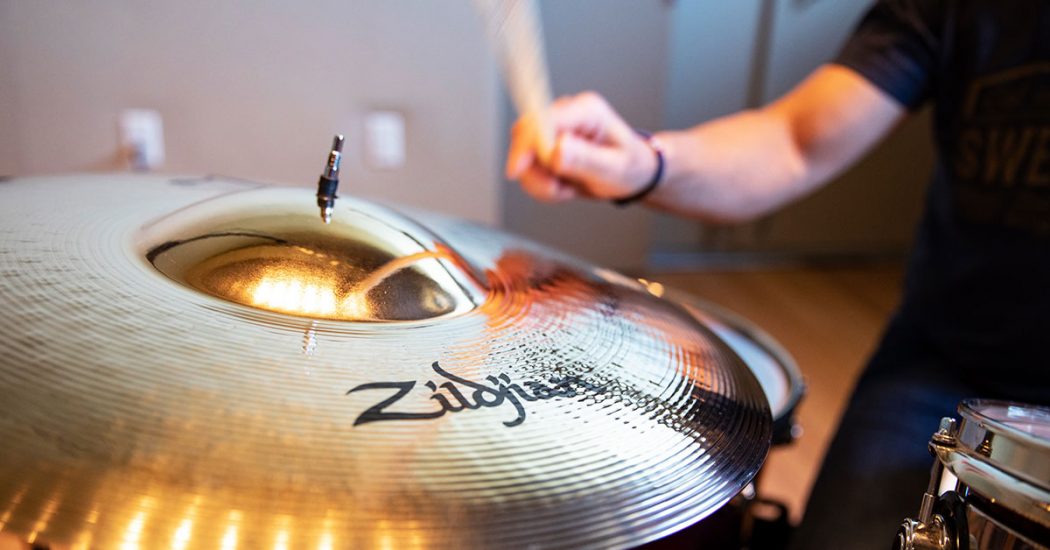
Cymbals 101

We’re going to cover everything you ever wanted to know about cymbals and how they’re made. If you’re a longtime player, feel free to skip ahead. If not, invest the time now to get a handle on what to look for in a cymbal.
The Importance of Good Cymbals
When you hear about someone “playing the drums,” it’s easy to forget about the other star of the show: the cymbals. Cymbals have been a hallmark of the drum set as we know it for over 100 years. Many players will agree that investing in a great set of cymbals is just as important as investing in a great set of drums, if not more so.
Anatomy of a Cymbal
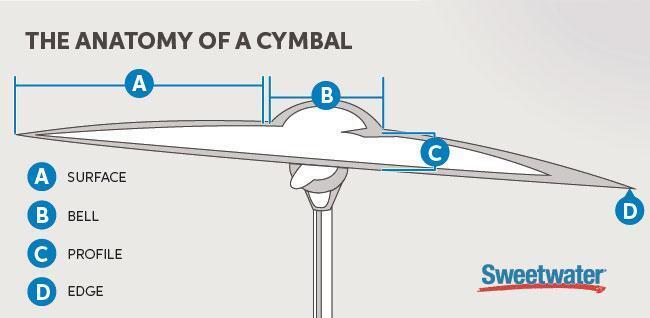
Understanding the anatomy of a cymbal is foundational to understanding trends in cymbal tones — those you like and those you don’t. A firm grasp of cymbal anatomy will help you make the most of your purchasing dollars. Here are the main considerations.
Regions
- Surface (A) — The playing surface between a cymbal’s bell and edge. It’s generally marked by a thinning-out in material and a gradual sloping taper. It’s here where 90% of your cymbal strikes should occur.
- Bell (B) — The domed structure in the center of a cymbal — also its mounting point and typically the thickest part — contributes to the projection and musical complexity of a cymbal. Generally speaking, the larger the bell, the louder and more harmonically rich the cymbal will sound. Some cymbals, such as rides, feature prominent bell regions that are struck with the stick’s shoulder to create accents and alternate textures.
- Profile (C) — The curvature of a cymbal, also known as its profile, plays a role in a cymbal’s pitch. All things equal, a flatter cymbal (low profile) will sound lower in tone than a more rounded (higher profile) cymbal.
- Edge (D) — The thinnest and outermost part of a cymbal. Playing closer to the edge tends to exhibit the greatest wash and smoothest attack. Take care never to strike a cymbal directly on its edge, as this can crack it.
Pitch and tonal factors
- Weight/thickness — Thickness (thus weight) is one the biggest contributors to a cymbal’s pitch and output. Thinner cymbals produce slower vibrations, thus, a lower tone. Thick cymbals produce faster vibrations and generally exhibit a higher tone. Weight and thickness also impact the cymbal’s output level, as low-frequency sound waves require more energy to propagate than high-frequency sound waves.
- Diameter — Another important factor in a cymbal’s pitch is its diameter. All things equal, the larger a cymbal, the lower its pitch. For example, a 12″ splash will sound deeper than a 10″ splash of the same style.
- Finish — Many cymbals today are available in brilliant (shiny) or traditional (earthy) finishes. Though this is generally regarded as a cosmetic choice, it is thought that a brilliant cymbal’s buffing treatment, which shaves a small amount of weight off the cymbal and smooths out lathing peaks along its surface, yields a glassier, smoother sound. Be advised, however, that brilliant finishes tend to show fingerprints and patina quicker than traditional finishes and may require regular cleaning.
- Hammering — Hammering adds shape and musical complexity to a cymbal. The smaller and more uniform the hammering pattern, the purer the tone. The larger and more irregular — the type of pattern typically produced by hand — the richer the harmonic content and “more musical” the tone. Extensive hammering can lead to subtle warping of the surface, which can create “trashy” or white-noise characteristics that many players enjoy.
- Lathing — Lathing creates record-like grooves along the surface of the cymbal. Since lathing removes mass, cymbal artisans can take advantage of this process to manipulate pitch and complexity following the initial shaping and hammering. Fine lathing results in less spacing for debris and oxidization to enter, yielding a brighter tone. Wide lathing, with its wider grooves, allows more oxidization to occur for a darker, warmer character.
- Rivets and holes — These less common options add character to a cymbal. Rivets popped into a cymbal’s bell or edge create the frying-pan sizzle commonly heard in swing music. Holes with large or small apertures may do everything from eliminate air lock in hi-hats and reduce overtones in crashes to create white-noise trashiness in FX cymbals.
Cymbal Composition
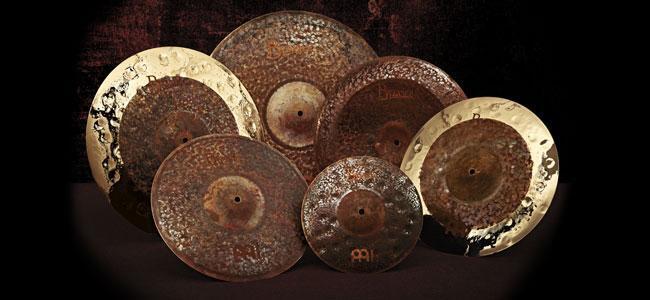
Cymbals today are almost universally made from bronze: an alloy comprised of tin and copper with trace amounts of silver, nickel, and other metals incorporated for durability and tonality. The ratio of tin to copper can play a dramatic role in a cymbal’s sound and response. Here are the major cymbal recipes you’ll find today.
Generally, the less tin there is, the more bright and focused the cymbal will sound.
Paul Francis, Zildjian Cymbals
- B8 Bronze (8% tin) — Also known as 2002 Bronze or CuSn8. B8 cymbals are typically marked by a bright, cutting, harmonically pure tone, which makes them a solid option for live stage use.
Examples: Sabian B8X, Zildjian ZBT, Paiste RUDE, Wuhan 457 - B10 Bronze (10% tin) — Also known as CuSn10. Meinl’s two Classics Custom lines currently have the lock on B10 bronze, which is characterized by output and definition, with a bell-like warmth and high dynamic range.
Examples: Meinl Classics Custom, Meinl Classics Custom Dark - B12 Bronze (12% tin) — Also known as CuSn12. Shimmery, pure, and glassy, B12 bronze balances output and control, warmth and cut. This alloy closely resembles Paiste’s guarded Signature Bronze alloy used in its Signature series.
Examples: Meinl Pure Alloy, Zildjian S Series - B20 Bronze (20% tin) — Also known as bell bronze or CuSn20. This centuries-old alloy is generally reserved for top-of-the-line cymbals. It’s famed for its darkness, complexity, versatility, and old-world Turkish heritage.
Examples: Zildjian Constantinople, Sabian AAX, Paiste Masters - Brass — Traditionally the basis for many budget-line cymbals, brass has seen a comeback this year in A&F’s Ankh collection. Brass typically yields a softer attack and lower output than bronze varieties, which suits it to reduced-dynamic (quiet stages, practice at home) applications.
Examples: Paiste PST 3, Meinl HCS, Sabian SBR, A&F Ankh
Cast vs. Stamped Cymbals
If you’ve been playing the drums for any length of time, you may have heard it said that cast cymbals are “better” than sheet-pressed, or stamped, cymbals. But this is unfounded. Every cymbal begins life as a raw blank of hardened metal. These blanks can either be cast and rolled or sheeted and stamped out. Ultimately, this step is just one of many. The hammering, formation, lathing, and craftsmanship play much bigger roles in a cymbal’s response and character.
Our advice? Buy with your ears. Even some of our top-of-the-line cymbals, such as Paiste’s Signature collection, are sheet bronze.
How Cymbals Are Formed
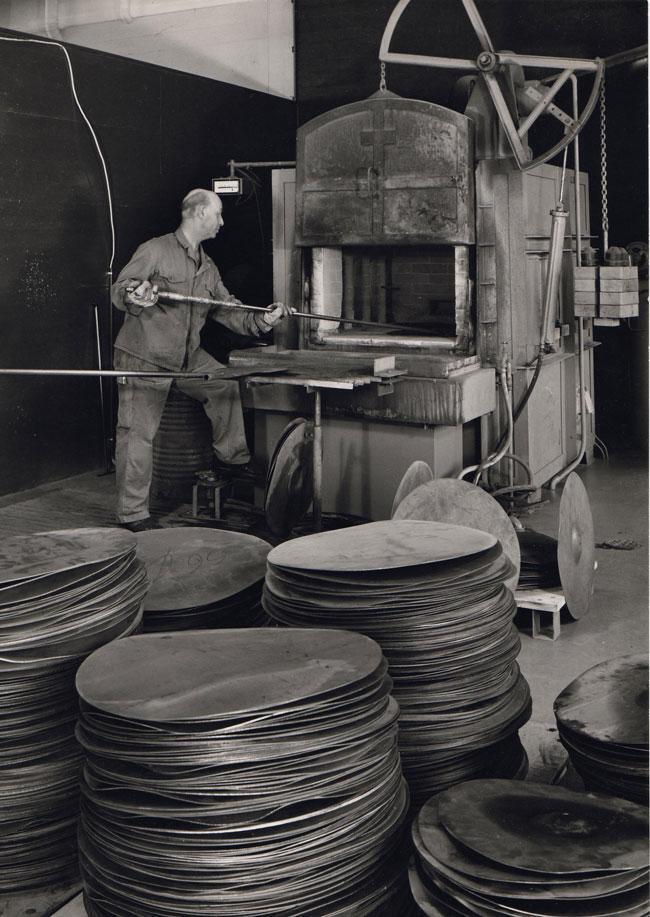
“Why are cymbals so expensive?” This is a question our Sales Engineers get asked on a regular basis. Fact is, a majority of cymbals require a tremendous amount of hand crafting. The shaping, the firing, the hammering — these are all laborious tasks that require a number of man-hours. Here’s the process broken down.
Formation
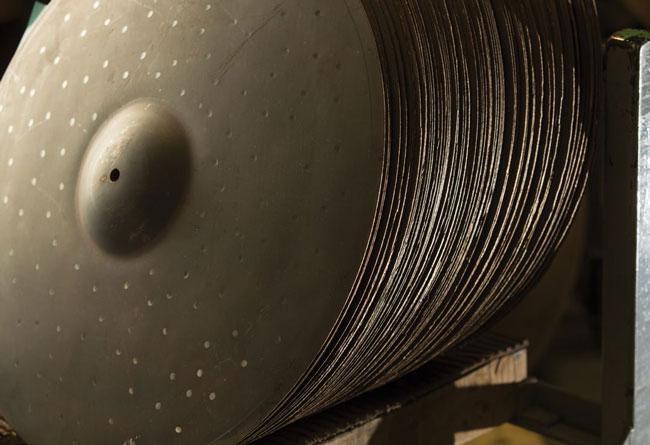
Most cymbals undergo the same basic formation that’s been used for centuries. Measured amounts of each alloy’s base elements (usually tin, copper, and silver) are liquified in a 2,000+°F foundry. The liquid metal is measured into molds to create Frisbee-like castings of the precious metals. Once cooled and hardened, castings are reheated and machine rolled multiple times to create the rough cymbal shapes and to promote musicality at a molecular level. These blanks, now brittle and blackened, are left to cool and harden before being heated a third time to form the desired bells. Factory tempering strengthens the cymbals and further expands their musical potential before their next step, which is where the real artistry can take shape.
Shaping and hammering
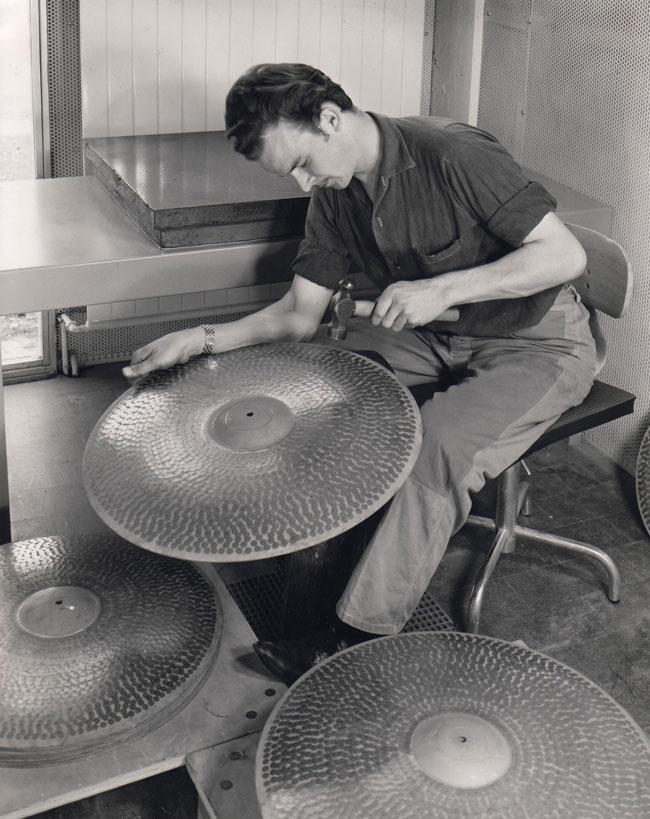
This is the stage where flattened blanks are cut to size and pressed or hammered into shape. Each hammer stroke’s depth and peen size influence the shape and tone of the finished cymbal. So whether it’s done by hand or machine, cymbal makers spend a good deal of time here. Every hammer stroke compresses the alloy to varying degrees, which affects vibrational patterns and harmonic excitement at the molecular level. Most manufacturers have a master guide or template from which all other like cymbals are formed.
Some cymbals, especially those with high profiles, are hydraulic pressed into shape before undergoing hammering.
Lathing and finishing
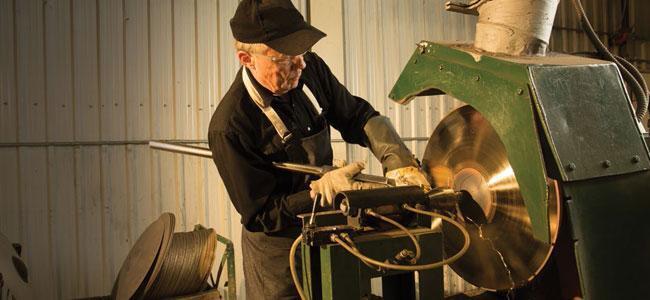
Once hammered, cymbals move onto the lathe, a spinning wheel where cymbals are hand-tooled or machined to form grooves along their surfaces. This is an important step for several reasons. First, it thins the cymbal to the desired weight and thickness in each region: bell, bow, and edge. Next, it cuts grooves into the cymbal, which influence how the cymbal projects and how it flexes and breathes.
Cymbals may either be left in the raw, lathed, or finished with a combination of both to produce their desired tonal properties. Depending on the rawness of the cymbal, the top, bottom, and edges may be buffed for smoothness. A protective lacquer may also be applied and buffed smooth to reduce oxidation.
Aging/maturation
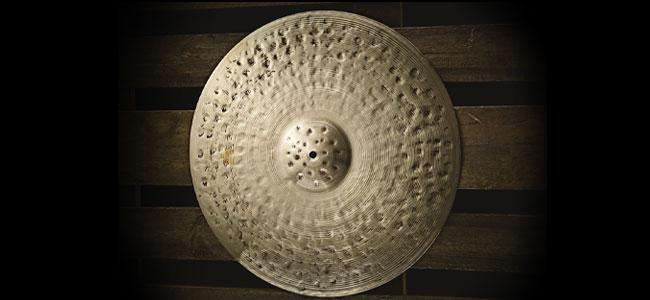
Allowing the cymbals to age naturally in a controlled environment — in a vault, on a shelf, or even underground — further impacts the musical properties of every cymbal. The molecules begin to relax and the metal becomes stronger. This process take can days, weeks, or even months, depending on the model.
Because of all the factors that go into the production of every cymbal, no two cymbals will ever be 100% alike. This hand production is another reason why cymbals, especially those where hand production is a major factor, can cost so much money.
The Role of Each Cymbal in a Drum Set
Every cymbal used in a kit serves a specialized purpose. Here are the key cymbal types you’ll find at Sweetwater.com.
Types of cymbals
- Hi-hat — This pair of cymbals is responsible for timekeeping and dynamic momentum. Hi-hats are traditionally mounted to a foot-controlled stand that is used to pump the cymbals or vary the degree of space between them. Pumped hi-hats are a hands-free method of keeping time during fills or when hands are busy around the kit. Played with sticks, hi-hats can either sound tight and controlled or washy and loud, with infinite degrees in between, to yield the desired texture and dynamics for each section of a song. The traditional sizing for hi-hats is 13″–14″, with 12s, 15s, and 16s becoming more common in recent years.
- Ride — The ride cymbal is the other major timekeeper behind the kit. Traditionally, rides have been used in jazz to create the “spang-a-lang” swing pattern. Today, they’re an essential for any style of music. At its core, the modern ride cymbal is used to create tonal diversity in places where the hi-hat isn’t the best option, either in terms of note length (slow ballads) or loudness (a rock chorus). Traditional sizing is 20″–24″.
- Crash — Crash cymbals are the quintessential cymbal sound — imagine your cousin Milo in concert band or the toy monkey with the two cymbals clanging together. Crashes provide a burst of color and texture to mark transitions and downbeats. Typical sizes range from 14″ all the way up to 20″ or greater.
- Crash/ride — Sized between a typical crash and a typical ride cymbal, the crash/ride is a nice multitasker for players who want to minimize cymbals. It combines the “ping” of a ride cymbal with the wash of a crash. As with most multitaskers, it tends to not really excel at either application, but it does offer good space and weight savings for players who are looking for a single cymbal to complement their hi-hats. The most common size is 18″.
- Splash — Small splash cymbals (generally 12″ and under) are quick, focused cymbals that are great for punching accents and punctuating fills. They’re typically fast and can be choked quickly to deliver a lightning-fast response with very little decay.
- China — China/chinese cymbals suspend “upside down” on a stand and exhibit lingering bursts of white noise when struck. These FX cymbals are great for accent work and metal breakdowns. Chinas can be found in sizes spanning 14″ to 20″, with 16″ to 18″ being the most common.
- Stacks — Stacked cymbals are factory-matched pairs of cymbals — usually crashes and FX cymbals — piggybacked one on top of the other. Stacks are bone dry in their attack and ultra-fast in their response, so they’re quick to speak and quick to get out of the way.
- Bells — These specialty FX cymbals are more closely related to glockenspiels than traditional cymbals. They impart a touch of orchestral maturity to bridge sections, intros, and ambient forms of music.
How Many Cymbals Do I Need?
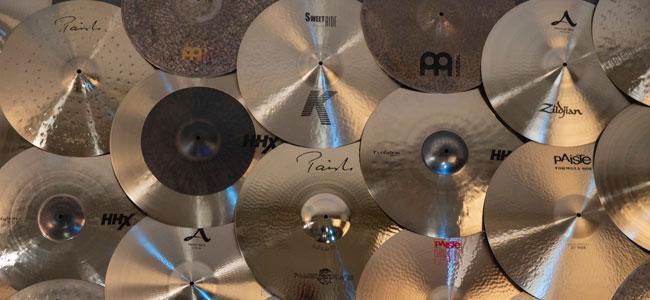
Cymbals are a bit like painting. Sure, you can get by with a single brush and a handful of colors. But as your ears advance, you’ll find yourself wanting more and more textures to experiment with. It’s not uncommon for session drummers to have multiple cymbal collections and jump back and forth between them for different sessions. Unlike drums, cymbals can’t be tuned. Therefore, if a cymbal doesn’t work for a particular sound or style of music, your best option is to sub it out.
That’s Great, but What Do I Need to Get Started?
Here are three recommended setups to have you up and drumming for whatever budget you’re working with.
The essentials
At the bare minimum, you’ll want to get your timekeepers in the mix. We’d recommend a setup like this:
- 14″ hi-hats
- 18″ crash/ride
This is about as spartan as you’ll want to go. The 14″ hats offer a tone, output, and performance platform to support a wide range of musical styles. The 18″ crash/ride does great for timekeeping, downbeat crashes, and occasional accent work.
The standard
This is closer to what we at Sweetwater would consider a standard setup.
- 14″ hi-hats
- 20″ ride
- 16″ crash
- 18″ crash
- 10″ splash
Here you’ve got “stereo” crash cymbals (one for each side of the kit) in complementary sizes — perfect for diversifying your accent work and crashing from either side of the kit — along with standard hat and ride options, plus a splash cymbal for accents and chokes.
The auteur
Here’s a more comprehensive cymbal palate for the refined session drummer or live performer.
- 15″ hi-hats
- 21″ ride
- 15″ crash
- 17″ crash
- 19″ crash
- 10″ and 12″ splashes
- 18″ china
This is a pretty full-featured cymbal setup in refined sizing that’ll speak to more mature ears. Really, though, this is still just a starting point; just look at Carter Beauford’s or Neil Peart’s kits to see what those drummers need for their catalog. Even so, we feel it strikes a balance between portability and tonal/textural options.
Cymbal Packs
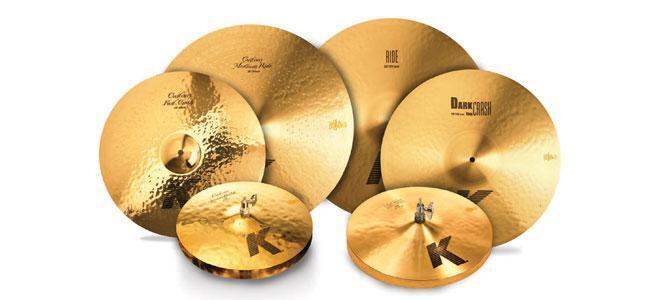
It used to be that prepackaged cymbals were relegated to lower-end series that came with beginner drum kits. Not so today. Manufacturers have put together some pretty elite cymbal sets to suit particular styles — rock, gospel, jazz, studio work, and more — at some pretty tempting prices. Not only that, but our cymbal experts here at Sweetwater have assembled several cymbal packs themselves. If you’re willing to do your homework, cymbal packs are a low-impact way to jump into a particular cymbal series or sound profile. They can also save you some bucks in the process.
Should My Cymbals Match?
Not in the least. It’s super common, especially among more experienced players, to see cymbals from multiple manufacturers and series on their kits. That said, it’s just as common to find a player who enjoys the matching look and complementary tones that a single series can provide. This is just another way in which the art of cymbal collecting comes down to a player’s preferences.
How Do I Know What Cymbals to Buy Without Playing Them?
This is an area where understanding cymbal anatomy can help immensely. Beyond the basics, YouTube and Sweetwater are great resources for auditioning cymbals before you buy. Be advised that very rarely, if ever, will any two cymbals sound exactly alike. Therefore, it’s not a bad idea to check out a few clips of the same model and size and average those qualities in your head.
Cymbal Care and Cleaning
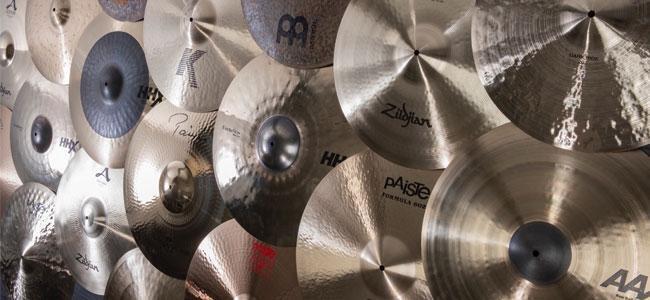
Here are some tips to keep your cymbals looking and sounding their best for years to come.
- Cleaner/polish — File this one under optional. Some players prefer the look of a nicely aged and patina’d cymbal. But if you’re the type who wants to keep your pies shinin’ like diamonds, a cymbal cleaner is the way to go. For best results, try to match your cymbal cleaner to the brand of cymbals you’re using. Paiste cleaner, for example, imparts a protective coating that you may not want on your vintage Zildjians.
- Cymbal sleeves/washers — Metal-on-metal contact can eat holes in your cymbals, also known as keyholing. Placing nylon or rubber cymbal sleeves around your cymbal stands’ threaded tilters will keep your cymbals safe for a lifetime of use. Likewise, make sure you’ve got felts or neoprene washers on the top and bottom sides of the cymbal, between your stand’s wing nuts and mounting plates, as this will further prevent abrasive contact.
- Proper angling — It should come as no surprise that thin brass and bronze crack. The best way to prevent this is with proper angling and technique. Position cymbals at a 30° angle and strike with a quick, glancing blow to the inside edge or outer bow. Just remember: you can bash your drumheads, but you should avoid bashing your cymbals.
- Loosen those wing nuts — Many players overtighten their wing nuts onto their cymbals. Gentle contact is all you need. Clamping down will restrict motion, resulting in reduced sound and compromised durability.
- Cymbal bag — Whenever you transport your cymbals, be sure to pack them in a cushioned cymbal bag, preferably one with divider sleeves. This will further reduce metal-on-metal contact and prevent damage from dropping.
Cymbal Glossary
Curious what the words “dark” or “glassy” refer to in drummer speak? Use this glossary from our friends at Sabian to get a handle on cymbal lingo.
- Attack — The response rate of the cymbal. Some models are faster (more attack) than others.
- Bright — Sounds that are high pitched; they offer increased cut.
- Cut — The ability of the sound (usually high pitched or loud) to cut through the surrounding music.
- Dark — Low-pitched, warm tones that combine for a “dark” response that blends into surrounding music.
- Dry — A minimum of tone ensures a very definite stroke response.
- Fast — Rate of response when the cymbal is struck: how fast or slow it makes a sound and how that sound decays. A smaller or thinner cymbal responds and decays faster than larger, heavier models.
- Fundamental — The predominant or main sound within the overall response of a cymbal.
- Glassy — Clear, shimmering response. Often clean and smooth, like glass.
- Hot — A fiery mix of dark, warm sounds with the added heat of agitated tones.
- Partials — The overtones or series of pitches produced in addition to the fundamental. Every cymbal will have a different percentage of highs, lows, and midrange partials.
- Sustain — The duration of the sound before it decays. Bigger cymbals sustain longer than smaller models.
- Timbre — The general sound characteristics of a cymbal.
- Trashy — Raw and dirty responses associated with chinese cymbals and some special models.
- Warm — A softer response that focuses on a blend of low-pitched, musical tones.
Still Need Help? Call Us Before You Buy!
Call Sweetwater’s drum experts today for a free one-on-one cymbal consultation. Just let them know about the Drumfluence Special Deal! They’ll be happy to walk you through the best options for the sound you’re after and the budget you’re working with. They eat and breathe drums and cymbals. Give them a call at (800) 222-4700.
Join Our Beyond the Beat Newsletter
All the latest drums news, interviews, lessons, reviews, deals and more, direct to your inbox!




